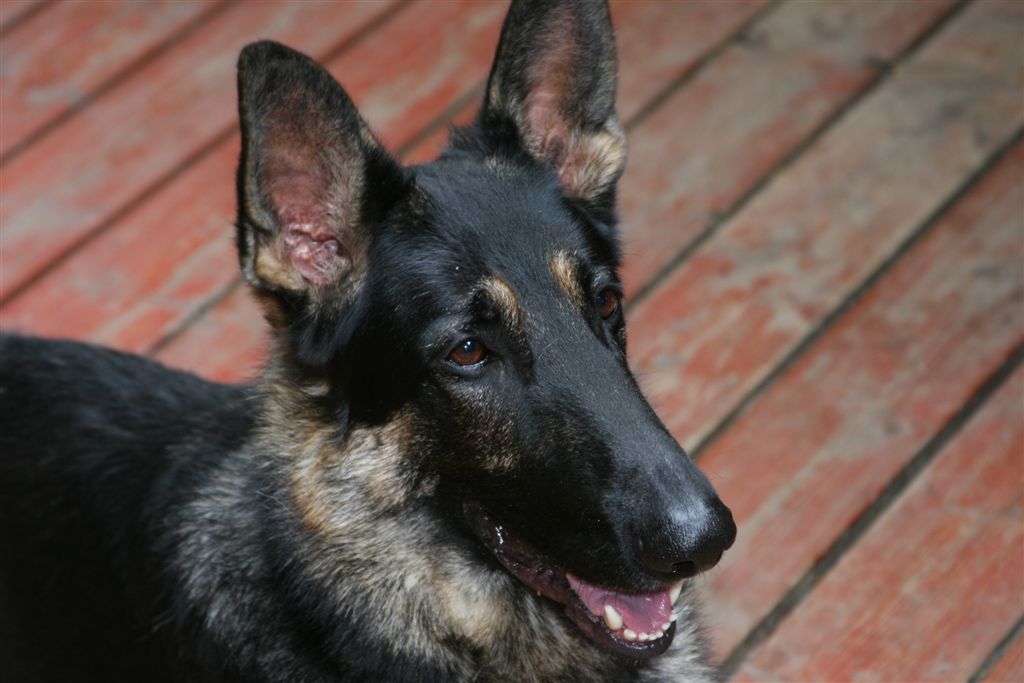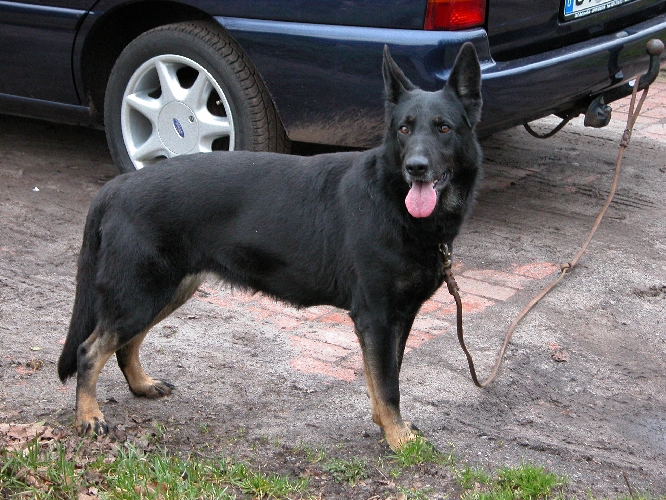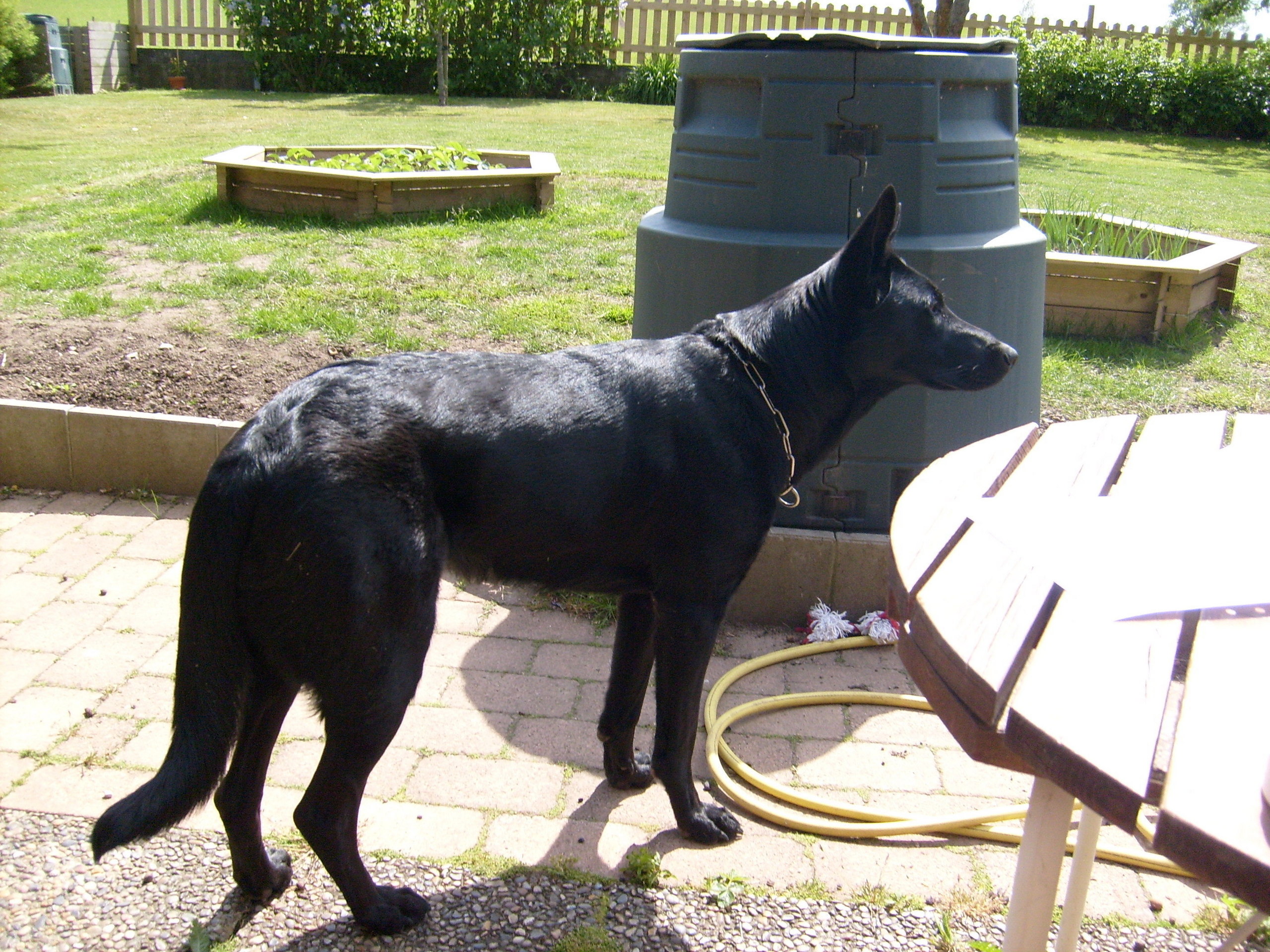
Bringing home a new German Shepherd puppy takes lots of planning ahead of time and plenty of puppy proofing. Before you jump head first into this big decision (please never bring home a puppy or dog on impulse) you must first evaluate your needs- your real ability to care for a dog, your household space issues, the financial ability to afford and adequately care for a dog, and the sincere readiness of ALL family members to welcome a new member into the family.
Depending on which German Shepherd puppy you choose you're easily going to share your life with this new addition for 12 years or more. And depending on which GSD puppy you choose and how well you socialize and train your new puppy, that time spent with your German Shepherd puppy can be great or terrible or anywhere in between.
What do you look for in your potential new GSD puppy? Most breeders and German Shepherd enthusiasts will agree that temperament is key.
Why is this so important? Because it makes a your German Shepherd more compatible in any situation, with better coping skills no matter what you throw at it. Soundness in temperament is key, no matter what the future purpose of the puppy may be - working, herding, companion, etc.
Now, a major question: where can a prospective buyer find the perfect German Shepherd puppy of their dreams? There is more than one answer to this question. Obviously the first thing you'll think of is from a breeder.This is by far the best way to get a German Shepherd other than through a GSD Rescue Service or at your local animal shelter. If you decide to go through a breeder, just remember, not from just any GSD breeder. If you decide to go this route just make sure the breeder you choose your next companion from is reputable.
Just what makes a breeder reputable you might ask? First off, I would start on the internet. Check out the German Shepherd Dog parent breed club (gsdca.org), and then do further serious research with local german shepherd breed clubs in your area. This is a great way to get several names of breeders. Another good way is to get referrals from local vets, any dog groomers in your area, or other German Shepherd Dog owners that you know of.
Please do all your research carefully and check out all recommendations and references seriously. Be cautious and ask a lot of questions. A good breeder will expect that from you and will ask you many questions as well before you get an opportunity to take their precious puppy home. If any German Shepherd "breeder" is willing to offer you a "deal", does not have a clean kennel or acts suspicious to you in any way, back out quickly. Trust your instincts.
Look for a GSD breeder who is truly interested in her breed and much more interested in finding a proper home for her puppies than simply getting paid. Any breeder who is simply in it for the money has the wrong motivation all together. Take the time to talk with the breeder more than once via the phone, email, etc. and visit the German Shepherd litter more than once if possible before making your decision.
Also, does the breeder offer a guarantee? What type? What kind of documentation do you get with the German Shepherd puppy? What about the registration papers? Pedigree? What other things go home with the new puppy? Food? Collar? Other paperwork? Did you get to meet the parents of the puppies and the litter mates? Did you get a chance to have hands on time with them? A reputable German Shepherd breeder will offer all of this and more. Don't expect any less.
Additionally, ask the German Shepherd puppy breeder about shots, dewormings and exams the puppy may have already have had. Are the GSD puppy's parents "OFA certified?" AKC Registered? Ask to see certification of both parents from one of these organizations; reputable GSD breeders will usually offer the information without asking.
And, take a very close look at the pup. It should be a proper weight (not too chubby or too thin); clean, odor-free and kept in clean surroundings; clear eyes, not runny or red; clean ears; full hair coat (no balding spots); no excessive scratching; and appear well-socialized, playful and friendly. Take the puppy to your vet for a compete exam with 48 hours of purchase.
Deal only with breeders who routinely screen their own dogs for diseases and various conditions that affect the GSD. While this is no health guarantee in any way, it does prove that the german shepherd breeder is doing his best to help you take home the best and healthiest puppy that you can.
The German Shepherd, like many other breeds, suffers from a variety of inheritable diseases that cannot be determined by a simply looking at the dog. A few common afflictions that plague the german shepherd dog breed are degenerative myelopathy, bloat and exocrine pancreatic insufficiency.
Research the history of incidence of all diseases in the puppy's parents and further down in its lineage. Your breeder should be able to discuss any likelihood of these diseases developing in your German Shepherd puppy.
Other things to worry about are the potential threat of hip and elbow dysplasia which are very common in many large breeds, the German Shepherd included. There are many tests available for your GSD puppy that help screen your dog for these conditions. Disorders of this type are screened by evaluating x-rays of a dog's joints, hip or elbow. The Orthopedic Foundation for Animals (OFA), a nonprofit foundation evaluates and registers X-rays, is the most common certification.
Choosing your perfect German Shepherd puppy and companion does require a great deal of time, effort and energy, but when done properly will be something you won't regret at all in the future.
More Important German Shepherd Puppy Issues
Weaning German Shepherd Pups German Shepherd Development - The First Year + Housebreaking Your German Shepherd Puppy Ear Taping the German Shepherd Puppy German Shepherd Puppy Supply List Puppy obedience training
















